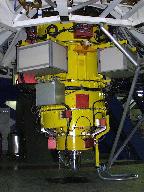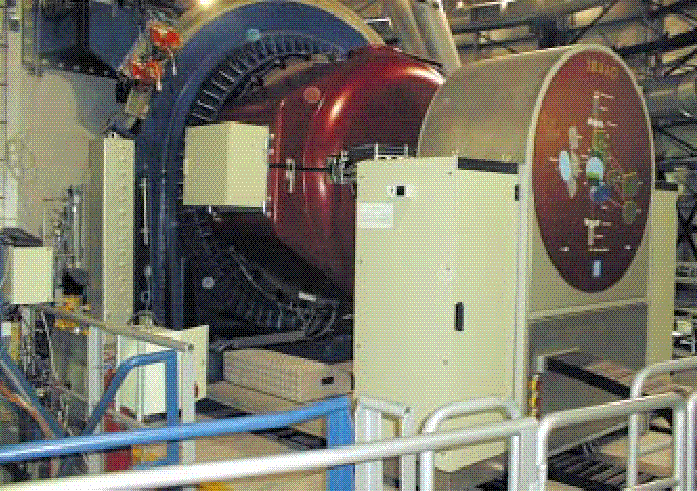FORS1 and ISSAC Science Verification
Contents
Overview
- Preamble
- The FORS-1/ISAAC SV Team
- The FORS-1 and ISAAC SV Strategy
- SV Data Policy
- Special Edition of A&A Letters, call for papers
SV Dataset
Preamble
The UT1/Antu Science Verification (SV) programme with the Test Camera, which was carried out in August 1998, included one major project (the multicolor coverage of the HDF-S) plus a number of short programmes meant to address problems in a wide range of astrophysical areas. For the SV of the two instruments now attached to UT1/Antu (FORS-1 and ISAAC) the same approach was followed, giving high priority to those programmes that potentially serve a wide section of the community. The aim of this strategy was to maximize the probability of success and the scientific return, while providing the best possible service to the community and pushing to the limit the capabilities of telescope and instruments. The many goals of the SV of the VLT and its instruments are extensively discussed elsewere ( Giacconi et al. 1999, A&A, 343, L1, and references therein).
The scientific programmes were selected according to the following selection criteria:
- Outstanding scientific interest
- Very challenging for VLT+Instrument capabilities
- Sufficiently complete datasets to allow prompt scientific exploitation
- Requiring most frequently used instrument modes
- Existence of many potential users within the ESO Community
- Complementarity with other available datasets (e.g. HST)
SV observations were planned to be executed on January 14-21 for FORS-1 and on February 18-25 for ISAAC. However, this schedule could not be met due to a combination of meteorological and technical reasons, which delayed the Commissioning of the two instruments. In order to deliver to the ESO users the UT1/Antu telescope in due time (April 1, 1999), only part of the SV plans could actually be completed.
Nevertheless, part of the FORS-1 SV observations were successfully executed during January 1999 by the VLT Commissioning Team, and transfered to the SV Team for the data reduction and preparation for public delivery. These SV data were part of the ESO Press Release of February 27, and were presented to the VLT Opening Symposium in Antofagasta on March 1.
For SV observations with the ISAAC instrument the SV Team could acquire data only during part of the night of February 28. These data have been later supplemented by additional observations of SV targets carried out in March by the ISAAC Commissioning Team. The Commissioning Teams having executed the January and March observations included: F. Comeron, J.-G. Cuby, R. Gilmozzi, C. Lidman, G. Rupprecht, J. Spyromilio. All the SV data have been reduced and calibrated by the SV Team, and prepared for public release. Although not as deep, complete and optimally calibrated as originally envisaged, these SV data still demonstrate the enormous scientific potential of the VLT and its first instruments. These are science grade data that all astronomers in the ESO community can now scientifically exploit, thus having an early access to FORS-1 and ISAAC data.
The FORS-1/ISAAC SV Team
The FORS-1/ISAAC SV Team includes the following scientists:
J. Alves, S. Cristiani, R. Hook, R. Ibata, M. Kissler-Patig, P. Moller, M. Nonino, B. Pirenne, R. Rengelink, A, Renzini, P. Rosati, D. Silva, E. Tolstoy, and A. Wicenec.
The SV Team took responsibility for the selection of the targets, the data reduction and quality evaluation. The team also ensured that the results were promptly disseminated and eventually fully exploited by promoting the involvement of scientists from the community. The SV Team remains the prime contact for the astronomers interested in using the SV data, will assist them as required, and will be responsible for collecting feedback from them.
For comments and questions on this SV data release please email <fors_isaac_sv@eso.org>.
The FORS-1 and ISAAC SV Strategy
Both FORS and ISAAC are imaging spectrographs, and a major imaging as well as a major spectroscopic programme were planned for them. For FORS-1 a multiobject spectroscopy (MOS) programme was designed since this is the most challenging technique.
For the imaging programme the aim has been to obtain very deep, multicolor images in optical and near-IR bands of a moderate redshift galaxy cluster.
For the FORS-1 MOS programme the SV observations concentrated on Lyman-break galaxies. Targets were selected from databases that are accessible to ESO users, with emphasis on existing publicly available data such as the EIS Deep Fields. Therefore, SV focused on targets in the so-called AXAF field. Moreover, during the second Commissioning phase of FORS-1 in December 1998, the FORS-1 Commissioning Team lead by I. Appenzeller collected MOS observations of candidate Lyman-break galaxies in the Hubble Deep Field South (HDF-S), drawn from the EIS-Deep Survey. The data have been reduced by the SV Team, and they are now part of the present release.
The SV Team aknowledges the effort made by the EIS Team for the prompt release of the survey products that made possible spectroscopic follow-up observations in a timely fashion.
The SV Team also prepared a broad range of small programmes and backup programmes to be executed in case the weather conditions would not meet the requirements of the main programmes (e.g. poor seeing, high cirrus, etc.). Most of these projects could not be executed, for the reasons mentioned above. However, science grade data were obtained for the following programmes:
- FORS-1 Broad-band imaging of Antlia, the dwarf irregular galaxy recently discovered in the Local Group.
- ISAAC Spectroscopy of the Highly-magnified Galaxy MS1512--cB58 at z=2.72.
Additional data taken by the Commissioning Team are in the process of being fully reduced and evaluated, and will be released as soon as possible.
SV Data Policy
With the exception of the HDF-South data, released worldwide, access to SV images will be restricted to astronomers in ESO member countries and Chile.


